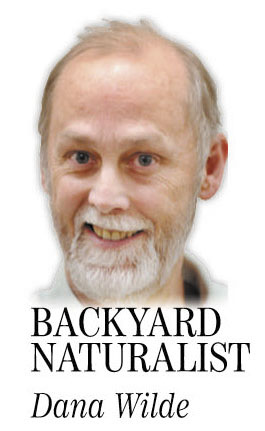The Earth is looping tilted, in a slightly off-center orbit around the sun. It’s been doing this for about 4.6 billion years, since it formed from rocky, gassy, dusty material clumping together, colliding with other clumps, and accumulating.
“Tilted” means it is spinning, or rotating, with the axis of the spin at about a 23.5 degree angle to the plane of its orbit around the sun. So the North Pole leans over toward the sun for part of the year and leans away from the sun the other part of the year. From this tilt develop our four beautiful seasons. When the North Pole is leaning toward the sun, rays of sunlight are striking the northern half of the Earth more directly. The air gets warmer, and it’s summer in the Northern Hemisphere. When the North Pole is leaning away from the sun, the rays of sunlight are striking less directly, the air is not warmed as efficiently, and it’s winter.
For a while in December, no direct sunlight hits the top of the Earth at all. A little south of the North Pole, like in northern Canada, the sun peeks up over the horizon for an hour or two then sets again for 22 or 23 hours. Farther south, here in central Maine, about halfway between the North Pole and the equator, the sun gets up a little higher in December than it does in, say, northern Alaska, and on our darkest day the sun is above the horizon for roughly 8.5 hours. In the latter part of June, the North Pole is at full tilt toward the sun, so we have nearly 15.5 hours of rays and the top of the world has daylight all day long.
You might have noticed that where six weeks or so ago you were fooling around in your yard in twilight after 9 p.m., now in September daylight is fading out around 7:30. It’s because the Earth in its 4.6-odd-billionth circuit around the sun is carrying the tilt-top pole out of Junelight toward December dark. Again. Late summer.
Of course, in the actual cosmic wheels there is no such thing as December or June. Humans made up those ideas to describe time frames that recur apparently forever every 365 days or so. The time frames got concocted out of the motion of the moon, which has been circling around the Earth for maybe 4.5 billion years since Earth and some other large clump of rocky material crashed into each other and a big chunk split off and careened into orbit around the Earth.
It takes about 27.3 days for the moon to orbit the Earth. Since it takes just about 365 days for the Earth to circle the sun once, that means the moon circles the Earth roughly 13 times a year. Since you can see the moon go through a complete full-to-dark cycle about every 28 days, and every about seven days a distinct phase in that process appears — half moon (first quarter), full moon, half moon (second quarter), and dark (new) moon — humans long ago started marking out seven-day periods called (in English) weeks. Because the arithmetic of 13 27.3-day moon cycles does not fit neatly into a 365.256-day year, we gave names to 12 of these moon cycles and tacked two or three days onto most of them to make up the difference, and call the whole thing good for a 12-month calendar. (The word “month” is a ghost of the word “moon.”)
This is just us living in our own little 4.6-billion-year-old world, though. The sun is in an orbit, too, though we can’t notice it by eyeball even generation after human generation because the time span so enormously overshadows the limits of human perception. The sun and whole solar system are traveling about 500,000 mph in a slightly off-center orbit along with billions of other stars around the center of the galaxy. We all make one big tidelike circuit once every 225 million years, give or take.
We say the sun is about 4.6 billion years old because that’s how many times the Earth has run around it. From the galactic center’s frame of reference, the sun is only 20 or 25 years old. No one has yet drawn a bead on whether any tilt of the solar system to the black hole at the galactic center creates any strange and beautiful seasons on our star.
The corn harvest moon, as long ago the Wabanakis called it during the spell we call September, is in its first quarter. Summer’s getting ready to close down yet again. You can see it in the twilight.
Dana Wilde lives in Troy. His collection of naturalist essays “Summer to Fall” is available from North Country Press http://www.northcountrypress.com/summer-to-fall.html. You can contact him at naturalist1@dwildepress.net. Backyard Naturalist appears the second and fourth Thursdays each month.
Send questions/comments to the editors.



Success. Please wait for the page to reload. If the page does not reload within 5 seconds, please refresh the page.
Enter your email and password to access comments.
Hi, to comment on stories you must . This profile is in addition to your subscription and website login.
Already have a commenting profile? .
Invalid username/password.
Please check your email to confirm and complete your registration.
Only subscribers are eligible to post comments. Please subscribe or login first for digital access. Here’s why.
Use the form below to reset your password. When you've submitted your account email, we will send an email with a reset code.